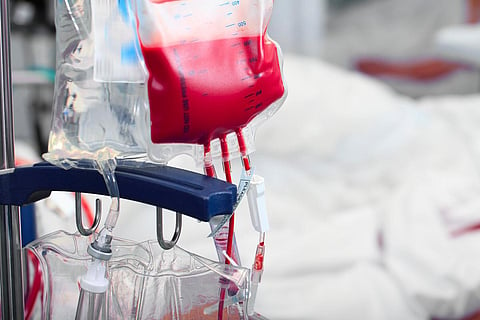TUESDAY, Oct. 1, 2024 (HealthDay News) -- For patients with acute myocardial infarction (MI) and anemia, 30-day risks for death or recurrent MI seem to increase with lower hemoglobin thresholds for transfusion, according to a study published online Oct. 1 in the Annals of Internal Medicine.
Gerard T. Portela, Ph.D., from the University of Pittsburgh, and colleagues estimated the efficacy of four individual hemoglobin thresholds (<10 g/dL, <9 g/dL, <8 g/dL, and <7 g/dL) to guide transfusion in patients with acute MI and anemia in a secondary analysis of the Myocardial Ischemia and Transfusion (MINT) trial conducted in 144 sites in six countries. Data were included for 3,492 MINT trial participants with acute MI.
The researchers found that the 30-day risk for death or recurrent MI (death/MI) was 14.8, 15.1, 15.9, and 18.3 percent for a <10-g/dL, <9-g/dL, <8-g/dL, and <7-g/dL strategy, respectively. Relative to the <10-g/dL strategy, the absolute risk differences and risk ratios increased as thresholds decreased, although the 95 percent confidence intervals were wide. Similar and imprecise findings were seen for 30-day death.
"The imprecision of these estimates, however, prevents explicit recommendations about individual hemoglobin transfusion thresholds," the authors write.
Abstract/Full Text (subscription or payment may be required)
Editorial (subscription or payment may be required)


